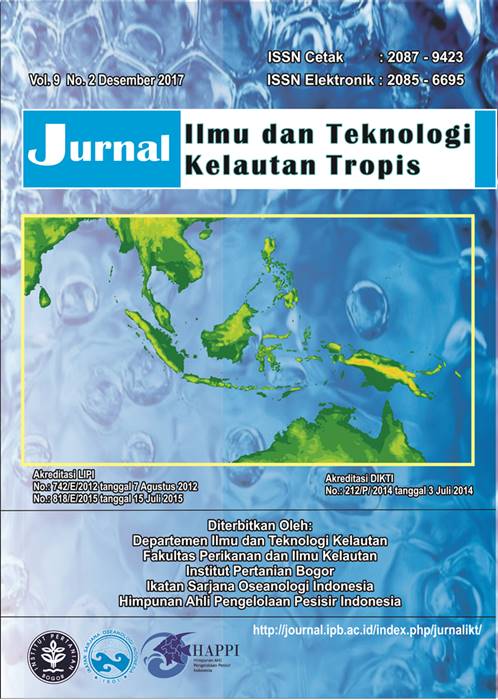ANTIBACTERIAL ACTIVITY FOR MULTI DRUG RESISTANCE (MDR) BACTERIA BYSEA CUCUMBER Stichopus vastus EXTRACT FROM KARIMUNJAWA ISLANDS – INDONESIA
Abstract
The study aims to explore the antibacterial activity of Stichopus vastus against pathogenic MDR bacteria. Analysis of samples of sea cucumbers included extraction, fractionation, and analysis of bacterial sensitivity test Gas Chromatography-Mass Spectrometry (GC-MS), the extraction process is carried out by solid-liquid extraction method. Fractionation was done with Open-Column Chromatography (OCC). Sensitivity test of bacteria was done using an agar diffusion method according to the Kirby-Bauer (Ref). The study revealed that from 5 species MDR bacteria, which are Coagulant negative stapylococi (CNS), E. coli, Enterobacter 5, Klebsiella sp. dan Pseudomonas sp. There are two MDR bacteria had the most sensitive responses by the extract of sea cucumber, which were Enterobacter-5 and Klebsiella sp. The two bacteria were tested against five bioactive fractions obtained from OCC. Fraction criteria-2 had the highest antibacterial activity against Enterobacter-5 and Klebsiella sp, with serial concentration of 20 µg ∙ disc–1, 40 µg. disc–1 and 80 µg. disc–1. Largest inhibition zone were obtained from 80 µg. disc–1 againts the two bacteria were (14.73 ± 0.48) mm and (11.22 ± 0.85) mm respectively. GC-MS Analysis revealed that fraction criteria-2 had (or consisted of) cyclohexhane, ethanol, butanoic and pentanoic acids.
Keywords: antibacterial activity, multi drug resistance (MDR), sea cucumber, Stichopus vastus
Authors
This work is licensed under a Creative Commons Attribution 4.0 International License.
Jurnal Ilmu dan Teknologi Kelautan Tropis i is an open-access journal, meaning that all content is freely available without charge to the user or their institution. Users are allowed to read, download, copy, distribute, print, search, or link to the full texts of the articles in this journal without needing to request prior permission from the publisher or the author.
All articles published by Jurnal Ilmu dan Teknologi Kelautan Tropis are licensed under the Creative Commons Attribution 4.0 International License. This allows for unrestricted use, distribution, and reproduction in any medium, provided proper credit is given to the original authors.
Authors submitting manuscripts should understand and agree that the copyright of published manuscripts is retained by the authors. Copyright encompasses the exclusive rights of authors to reproduce, distribute, and sell any part of the journal articles in all forms and media. Reproduction of any part of this journal, its storage in databases, and its transmission by any form or media is allowed without written permission from Jurnal Ilmu dan Teknologi Kelautan Tropis.


